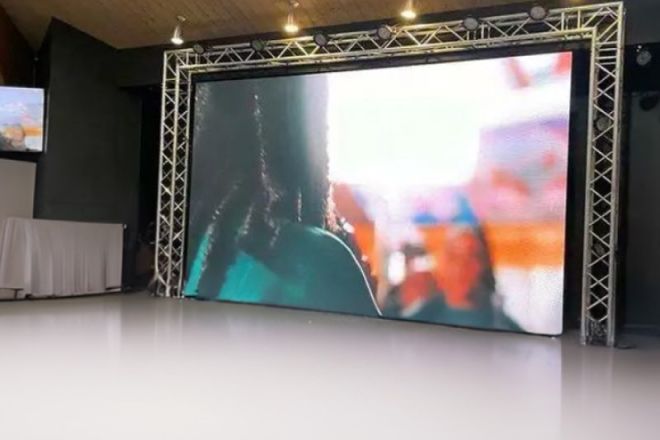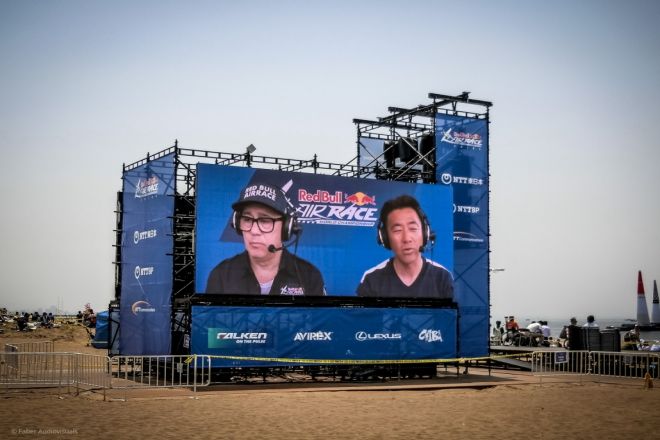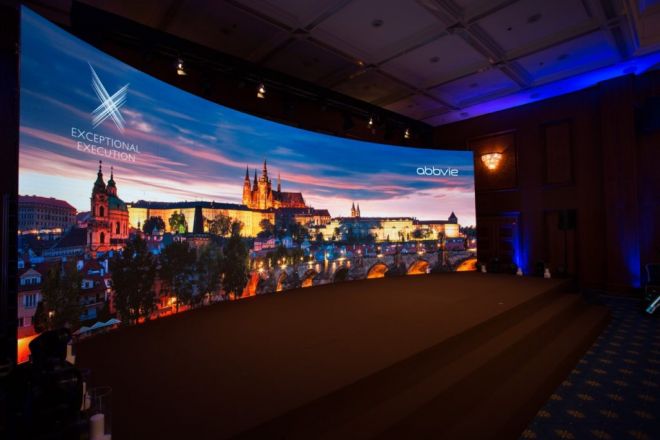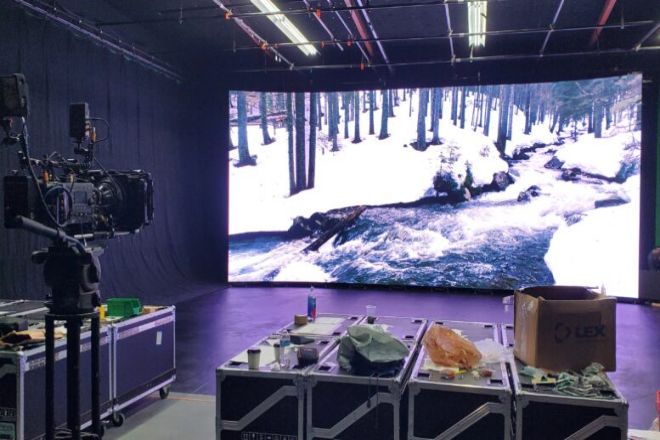Introduction

In today’s era of visual prevalence, LED displays have become an indispensable tool for various activities, conferences, exhibitions, and commercial promotions with their excellent display effects, flexible application scenarios, and powerful information transmission capabilities.
Whether it is a shocking concert scene or a solemn and elegant product launch, LED displays can bring unprecedented visual experience to the audience with their unique charm. However, before enjoying the convenience and shock brought by the LED display, as a potential tenant, you need to plan carefully and consider comprehensively to ensure that the rented display can perfectly match our needs and add luster to the success of the event.
1. Choose a suitable LED display

When planning any event or promotional project, it is crucial to choose a suitable LED display. This is not only related to the presentation of visual effects, but also directly affects the overall atmosphere of the event and the experience of the participants. The following is a detailed explanation of how to choose a suitable LED display from three aspects: event type and scale, display content, and venue conditions.
1). Event type and scale
1.1). Nature of event:
Concert: Usually, a large-size, high-brightness, high-resolution display is required to ensure that audiences at a distance can also get clear visual effects. At the same time, consider adding dynamic effects to enhance the atmosphere of the scene.
Product launch: Focus on display details, so the resolution and color reproduction are high. The screen size is moderate so that participants can watch closely without losing details.
Sports events: Due to the wide distribution of audiences, large-size, high-brightness displays are required to ensure clear visibility even in direct sunlight. At the same time, consider the need for real-time data display.
Outdoor advertising: Choose the right size and brightness based on the advertising location and audience group to ensure that it can effectively attract attention under various environmental conditions.
1.2). Expected number of participants:
Events with a large number of participants, such as large concerts or sports events, require larger displays to meet the needs of long-distance viewing.
For small events or meetings, moderate-sized displays can be selected, which are both economical and practical.
2). Display content
2.1). Content type:
Video: High frame rate and high-resolution displays are required to ensure smooth images, bright colors, and rich details.
Image: High color reproduction and resolution are required to ensure clear and accurate colors.
Text: Although the resolution requirements are relatively low, clarity and readability are still important, especially when viewed from a distance.
Real-time data: such as scores and timings in sports events, requires the display screen to be able to quickly update data and ensure the accuracy of the data.
2.2). Display effect:
Consider whether high-definition, smooth, or special effects (such as 3D effects, dynamic backgrounds, etc.) are required. These will affect the selection of technical specifications for the display screen.
3). Venue conditions
3.1). Size and shape:
Choose the appropriate size and shape of the display screen according to the size and shape of the event venue. Ensure that the display screen can make full use of the venue space without affecting the audience’s sight and passage.
3.2). Layout:
Consider the installation position and angle of the display screen to ensure that all viewers can get a good viewing experience. Customized installation solutions may be required to meet special needs.
3.3). Lighting conditions:
The lighting conditions during the day and at night are quite different, and it is necessary to select a display screen with sufficient brightness to ensure that it can be clearly seen in all kinds of light.
For outdoor advertising and other displays that need to be exposed to the sun for a long time, protection measures such as sun protection and rain protection must also be considered.
3.4). Shields:
Are there any shields, such as trees and buildings, in the venue? These will affect the visibility of the display screen and the choice of installation location.
In summary, choosing a suitable LED display screen requires careful consideration of multiple factors, such as the type and scale of the event, the content of the display, and the conditions of the venue. Through careful planning and evaluation, we can find the display screen solution that best suits our needs and adds luster to the success of the event.
2. Budget planning
ecifications include two aspects: area and technical level. The larger the area and the higher the technical level of the display screen, the higher its rental cost will naturally be. Therefore, when planning the budget, it is necessary to reasonably select the specifications of the display screen according to the actual needs of the event to balance the relationship between visual effects and costs.
1). Additional costs
In addition to the rental cost, there are a number of additional costs that may be incurred that need to be considered. These costs include, but are not limited to:
Transportation costs: the cost of transporting the display from the supplier to the event venue.
Installation and removal costs: the cost of installing, debugging, and removing the display after the event. These costs are usually related to the specifications of the display, the difficulty of installation, and the manpower and material resources required.
Technical support costs: the cost of technical support personnel that may be required during the event, including on-site debugging, troubleshooting, etc.
Insurance costs: Purchase insurance for the display to deal with possible unexpected losses or damage.
When planning your budget, be sure to take these additional costs into account and ensure that the total budget is sufficient to deal with various possible situations.
2). Cost-effectiveness evaluation
Finally, performing a cost-effectiveness evaluation is a key step in choosing the best rental solution. By comparing the prices and services of multiple suppliers, you can have a more comprehensive understanding of the market and find the most cost-effective solution.
When evaluating cost-effectiveness, you should not only pay attention to the price factor, but also consider multiple aspects such as service quality, technical support capabilities, and after-sales service. Choosing a reputable and experienced supplier can ensure the quality and stability of the display, reduce the risk of the event, and improve the overall effect.
3. What are the requirements for performance?

When choosing an LED display, its performance is directly related to the final display effect and the audience’s viewing experience. Here are a few key performance requirements that require special attention:
1). Resolution and clarity
- HD or UHD display requirements:
Resolution is an important indicator for measuring the clarity of the display. For activities that require the display of fine images or text, such as product launches, art exhibitions, etc., ensure that the resolution of the display meets the requirements of HD or UHD (4K, 8K) display. This way, the picture can remain clear and detailed even when viewed from a distance.
2). Brightness and contrast
- Adapt to different lighting conditions:
Brightness is a key factor in the visibility of the display in bright environments. It is crucial to choose the appropriate brightness level according to the lighting conditions of the event venue (such as indoors, outdoors, during the day, at night, etc.).
High-brightness displays can remain clearly visible in the sun, while low brightness is suitable for dark environments to avoid glare. At the same time, contrast is also an important factor affecting the display effect. High contrast can enhance the layering of the picture and make the colors more vivid.
3). Refresh rate and grayscale
- Reduce image smearing and improve color fineness:
Refresh rate refers to the number of times the display screen updates the screen per second. A high refresh rate can reduce image smearing and make dynamic images smoother and more natural.
A high refresh rate is particularly important for activities that require the display of fast-moving images (such as sports events, concerts, etc.). In addition, the grayscale level determines the color level and fineness that the display screen can present.
High grayscale levels can present richer color transitions and more delicate image details, improving the viewing experience.
4). Viewing angle range
- Ensure wide-angle viewing:
The viewing angle range refers to the maximum angle at which the image is not distorted when the audience views the display screen from different angles. In order to ensure that the audience can see clearly from all angles, the display screen should have sufficient horizontal and vertical viewing angles. Generally speaking, wide-angle viewing screens can provide a wider viewing range, so that the audience can get a good viewing experience at different locations.
4. Supplier selection and service
In the process of renting LED display screens, choosing the right supplier and ensuring that it provides high-quality services are key to ensuring the success of the project. The following is a detailed explanation of how to select suppliers and evaluate services from four aspects: credibility and experience, technical support, contract terms, and flexibility.
1). Reputation and experience
- Market reputation:
Choosing a supplier with a good market reputation is the primary consideration. You can evaluate the supplier’s market reputation by looking at past cases, customer reviews, industry awards, etc. This information usually reflects the supplier’s service quality, technical strength, and customer satisfaction.
- Experience accumulation:
Experienced suppliers can better deal with various emergencies during project implementation and ensure the smooth progress of the project. Understanding the supplier’s implementation experience and results in similar projects will help you determine whether it has the ability to meet your needs.
2). Technical support
- Full range of services:
Confirm whether the supplier provides a full range of technical support services from on-site installation, commissioning, and troubleshooting to emergency repairs. These services are essential to ensure that the display screen operates stably during the event.
- Professional team:
Understand the size and strength of the supplier’s technical team and ensure that it has sufficient professional knowledge and skills to deal with possible technical problems. At the same time, pay attention to the supplier’s technical training and support system so that you can get timely and effective help when needed.
3). Contract terms
- Read carefully:
Before signing a lease contract, be sure to read the contract terms carefully to ensure that all contents are clear and unambiguous. Focus on key terms such as lease term, rent payment method, deposit refund conditions, damage compensation standards, and liability for breach of contract.
- Clarify responsibilities:
Ensure that the rights and obligations of both parties are clearly defined in the contract to avoid unclear responsibilities in the event of subsequent disputes. At the same time, it is also necessary to understand the termination clauses and dispute resolution mechanisms in the contract so that appropriate legal measures can be taken when necessary.
4). Flexibility
- Adjustment plan:
Consider whether the supplier can flexibly adjust the lease plan according to actual needs. For example, if you need to temporarily increase the usage time or change the display model during the event, can the supplier respond quickly and meet these needs?
- Customized service:
For projects with special needs, find out whether the supplier provides customized services. This includes tailoring the display solution according to factors such as venue conditions and display content to ensure that the final display effect meets expectations.
5. Backup plan and risk assessment

When holding any event using LED display screens, in order to ensure the smooth progress of the event and deal with possible emergencies, it is indispensable to formulate backup plans and conduct risk assessments. The following is a detailed explanation of these two aspects.
1). Backup plan
1.1). Alternative display methods in case of display failure:
- Backup display:
Consider preparing one or more backup display screens at the event site, which can be quickly replaced if the main display screen fails. This requires communicating with the supplier in advance and confirming the availability of the backup display screen.
- Traditional display method:
If there is no backup display screen or time does not allow replacement, you can consider using traditional display methods, such as projectors, large posters, physical props, etc., to continue to display the content. This requires preparing the corresponding display materials and equipment in advance.
- Digital alternative:
Use mobile devices such as mobile phones and tablets to synchronize the display content to multiple devices through wireless networks or Bluetooth technology, allowing the audience to watch through personal devices. This requires a stable network environment and sufficient bandwidth support at the event site.
1.2). Response to other emergencies:
- Content backup:
Ensure that all display content is backed up and stored in a safe and reliable place. Once the original content is lost or damaged, it can be quickly restored.
- Staff deployment:
Develop a staff deployment plan to ensure that enough manpower can be quickly mobilized to deal with problems in emergencies.
2). Risk assessment
2.1). Weather risk assessment:
- Rainy days:
Consider the waterproof performance of the display screen and whether facilities such as rain shelters need to be built to protect the display screen and the audience.
- Strong wind:
Evaluate the installation stability of the display screen to ensure that it will not collapse or be damaged in strong wind weather.
- High or low temperature:
Understand the operating temperature range of the display screen and prepare corresponding cooling or warming measures to ensure the normal operation of the display screen.
2.1). Power supply risk assessment:
- Backup power supply:
Prepare backup power supply equipment such as generators to cope with sudden power outages.
- Power inspection:
Conduct a thorough inspection of power lines and equipment before the event to ensure the stability and safety of the power supply.
2.3). Personnel operation risk assessment:
- Professional training:
Provide professional training for operators to ensure that they are familiar with the operating procedures and precautions of the display screen.
- Safety regulations:
Formulate and strictly implement safety operation regulations to prevent accidents caused by improper operation.
By formulating backup plans and conducting risk assessments, we can better respond to possible emergencies and ensure the smooth progress of the event. At the same time, this will also help improve our resilience and risk awareness and accumulate valuable experience for future events.
Conclusion
In summary, renting an LED display screen is a complex process involving many factors, which requires us to make meticulous considerations from multiple dimensions such as usage requirements, budget planning, technical specifications, supplier selection, safety compliance, and risk assessment.
Only with adequate preparation and planning can we ensure that the rented LED display screen can play the greatest role and add infinite brilliance to the event.
Finally, if you want to know more about LED display screens, please get in touch with us.
